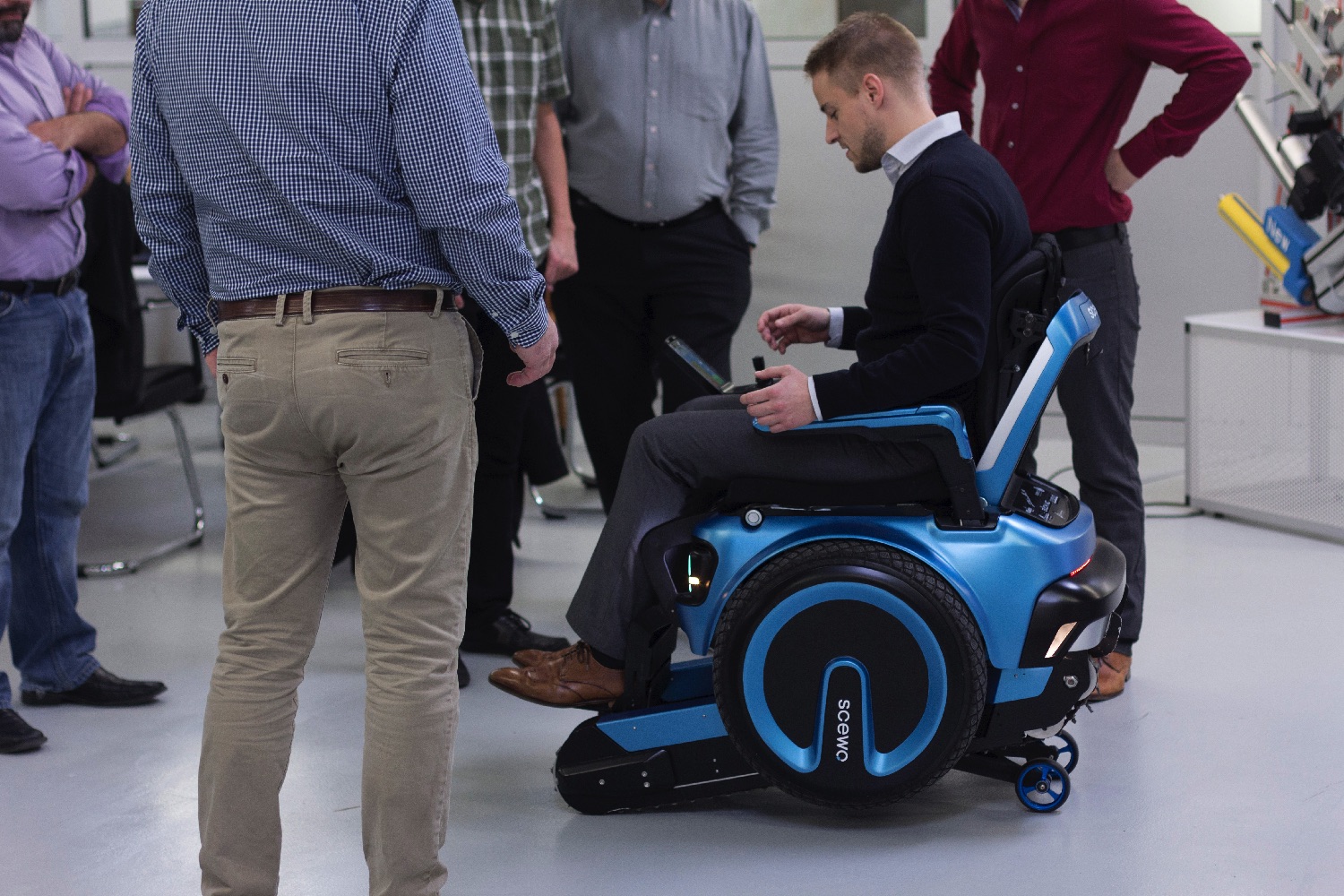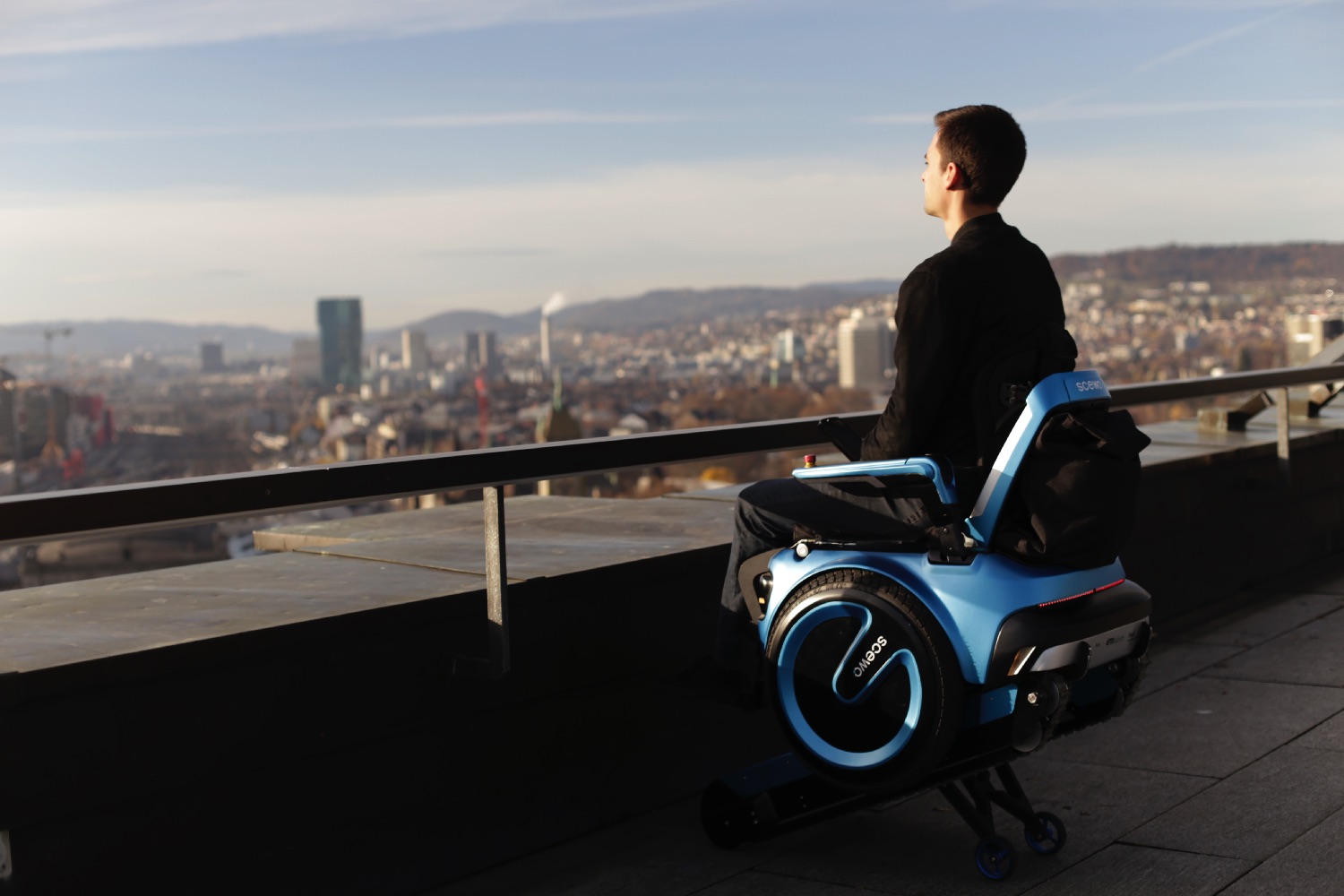Called Scewo, the next-gen wheelchair uses rigid rubber grips as a way to navigate up and down steps, even including spiral staircases. In addition, it can lift users up to either provide them with a better vantage point or allow them to grab objects that would otherwise be out of reach.
“Scewo gives a completely new experience of freedom, and lets you forget your disability,” Bernhard Winter, one of the brains behind the project, told Digital Trends. “The wheelchair is very agile indoors and allows you to drive and turn in a tiny space. It removes any barriers in your life, allowing you to use the public transport such as buses and trains effortlessly. The few steps in front of a restaurant or the flight of stairs on the way to work are no longer an obstacle because you can climb them in a smoothly and elegant way.”
The wheelchair utilizes three gyroscopes which measure the angular velocity to keep the chair balanced automatically. According to Winter, driving up and down steps is virtually effortless, while accelerating and then rapidly breaking won’t throw a user out of their chair because of the lack of horizontal forces involved.
“The challenging part about the balancing control was to be able to steer it with a joystick,” he said. “This is unique in our chair and allows people without any upper body strength to drive around with Scewo without problems.”
At present, the team has one working prototype. However, the group is raising money on Patreon with the goal of bringing a finished product to market by the end of 2018.
“Our dream is to bring our wheelchair to the market so people can take advantage of this new technology and use it in their daily life,” Winter said. “But there is still a long way to go. Currently, we are still studying and working on the wheelchair in our free time.”
Editors' Recommendations
- Meet the startup that gives wheelchairs aftermarket superpowers
- Self-driving wheelchairs are tootling about JFK airport in British Airways test







